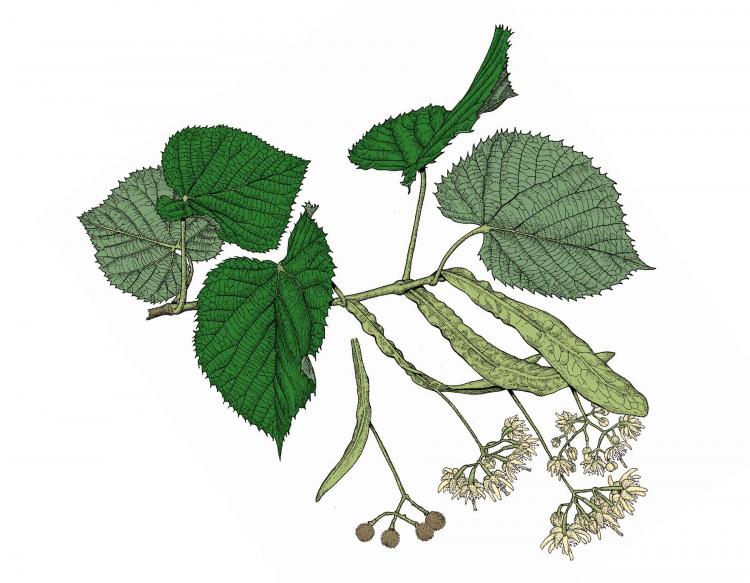
Quick Facts
- Plant Type: Large wide-spreading tree
- Foliage type: Deciduous
- Tree height: 60 to 80 feet
- Tree width/spread: 20 to 40 feet
- Hardiness: USDA Zones 2 to 8
- Flower Color: Long clusters of fragrant pale yellow flowers
- Sun/light exposure: Prefers full sun but is shade tolerant
- Water requirements: Prefers moist site but has moderate drought tolerance
- Seasonal Interest: Attractive form, leaves and fragrant flowers
American Linden (Tilia americana)
American Linden, or Basswood, is a stately shade and street tree that is found in the wild over much of the eastern and mid-western sections of the United States and into Canada. It has the largest leaf of all the broadleaf trees in North America.
Native peoples soaked the inner bark of American Linden in water to separate its tough fibers, which were then used to make ropes, nets, mats, shoes, clothing and thread.
American Linden becomes a large tree up to 80 feet in height, occasionally growing taller. It has a dense crown of many small, often drooping branches. It needs plenty of room to develop.
American Linden flowers in early to mid-summer. Blossoms are pale yellow and hang down in a long, gracefully branched cluster several inches long. The flowers are highly fragrant and when in bloom the trees are full of bees. It is well known as a honey-tree. Basswood honey is water-white with a strong flavor that works well in many recipes.
Flowers are followed by a small, grey nut which persists until midwinter. Broadly oval leaves 4 to 8 inches long sometimes change to yellow in fall but often turn brown and become somewhat unsightly. The soft, light wood is especially useful for making food boxes, and furniture.
American Linden is easy to transplant and young saplings can tolerate moderate shade. A mature tree casts considerable shade that can kill grass and other vegetation around the base of its trunk.

